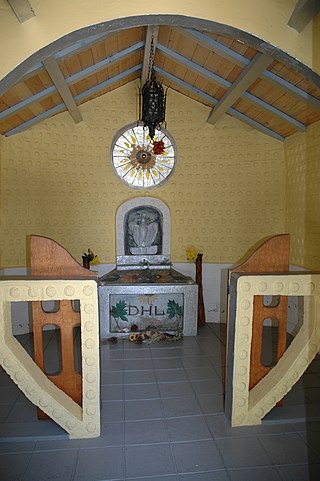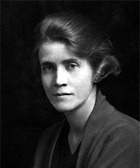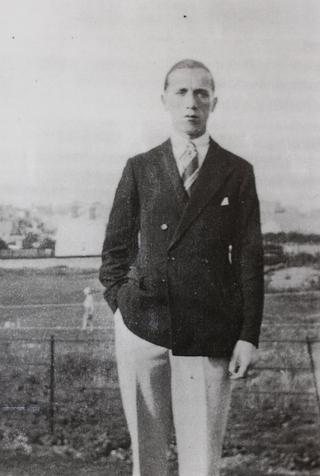
Edna Ferber was an American novelist, short story writer and playwright. Her novels include the Pulitzer Prize-winning So Big (1924), Show Boat, Cimarron, Giant and Ice Palace (1958), which also received a film adaptation in 1960. She helped adapt her short story "Old Man Minick", published in 1922, into a play (Minick) and it was thrice adapted to film, in 1925 as the silent film Welcome Home, in 1932 as The Expert, and in 1939 as No Place to Go.

David Herbert Lawrence was an English novelist, short story writer, poet and essayist. His modernist works reflect on modernity, social alienation and industrialization, while championing sexuality, vitality and instinct. Several of his novels, Sons and Lovers, The Rainbow, Women in Love, and Lady Chatterley's Lover, were the subject of censorship trials for their radical portrayals of sexuality and use of explicit language.

Of Mice and Men is a 1937 novella written by American author John Steinbeck. It narrates the experiences of George Milton and Lennie Small, two displaced migrant ranch workers, who move from place to place in California in search of new job opportunities during the Great Depression in the United States.

Henry James was an American-British author. He is regarded as a key transitional figure between literary realism and literary modernism, and is considered by many to be among the greatest novelists in the English language. He was the son of Henry James Sr. and the brother of philosopher and psychologist William James and diarist Alice James.

Kathleen Mansfield Murry was a New Zealand writer and critic who was an important figure in the modernist movement. Her works are celebrated across the world, and have been published in 25 languages.

Marianne Craig Moore was an American modernist poet, critic, translator, and editor. Her poetry is noted for its formal innovation, precise diction, irony, and wit. She was nominated for the 1968 Nobel Prize in Literature by Nobel Committee member Erik Lindegren.

Theodore Francis Powys – published as T. F. Powys – was a British novelist and short-story writer. He is best remembered for his allegorical novel Mr. Weston's Good Wine (1927), where Weston the wine merchant is evidently God. Powys was influenced by the Bible, John Bunyan, Jonathan Swift and other writers of the 17th and 18th centuries, as well as later writers such as Thomas Hardy and Friedrich Nietzsche.

Jessie Redmon Fauset was an editor, poet, essayist, novelist, and educator. Her literary work helped sculpt African-American literature in the 1920s as she focused on portraying a true image of African-American life and history. Her black fictional characters were working professionals which was an inconceivable concept to American society during this time Her story lines related to themes of racial discrimination, "passing", and feminism.

The Torrents of Spring is a novella written by Ernest Hemingway, published in 1926. Subtitled "A Romantic Novel in Honor of the Passing of a Great Race", Hemingway used the work as a spoof of the world of writers. It is Hemingway's first long work and was written as a parody of Sherwood Anderson's Dark Laughter.
The Cambridge Edition of the Letters and Works of D. H. Lawrence is an ongoing project by Cambridge University Press to produce definitive editions of the writings of D. H. Lawrence. It is a major scholarly undertaking that strives to provide new versions of the texts as close as can be determined to what the author intended.

Mary Louisa (Mollie) Skinner was a Western Australian author, best known for the novel The Boy in the Bush co-authored with D. H. Lawrence.

"The Woman who Rode Away" is a short story by D. H. Lawrence. It was written in New Mexico during the summer of 1924 and first published in The Dial in two installments in 1925. It later became the title story for a collection of Lawrence's shorter fictional works, The Woman who Rode Away and Other Stories, issued in 1928 by Martin Secker in the UK and Alfred A. Knopf in the US. The cave that features at the end of the story was inspired by a visit to a cave on Lucero Peak which overlooks the town of Arroyo Seco, New Mexico.

The Ladybird is a long tale or novella by D. H. Lawrence.
"The Princess" is a short story by the English author D. H. Lawrence. He wrote it in September and October 1924 during a stay at the Kiowa Ranch in New Mexico. The story was first published in instalments in the March, April and May 1925 issues of the Calendar of Modern Letters. It was then printed as a book, along with St Mawr, by Martin Secker on 14 May 1925.

The D. H. Lawrence Ranch, as it is now known, was the New Mexico residence of the English novelist D. H. Lawrence for about two years during the 1920s and the only property Lawrence and his wife Frieda owned. The 160-acre (65 ha) property, originally named the Kiowa Ranch, is located about eighteen miles (29 km) northwest of Taos, New Mexico, near Lobo Mountain and San Cristobal in Taos County, at about 8,600 feet (2,600 m) above sea level. The gate of the ranch is 4.2 miles (6.8 km) by road from a historic marker and turnoff on state route NM 522.

Stella Benson was an English feminist, novelist, poet, and travel writer. She was a recipient of the Benson Medal.

Vivian Rees Davies, known as Rhys Davies, was a Welsh novelist and short story writer, who wrote in the English language.

While the Light Lasts and Other Stories is a short story collection by Agatha Christie first published in the UK on 4 August 1997 by HarperCollins. It contains nine short stories.

Hon. Dorothy Eugénie Brett was an Anglo-American painter, remembered as much for her social life as for her art. Born into an aristocratic British family, she lived a sheltered early life. During her student years at the Slade School of Art, she associated with Dora Carrington, Barbara Hiles and the Bloomsbury group. Among the people she met was novelist D.H. Lawrence, and it was at his invitation that she moved to Taos, New Mexico in 1924. She remained there for the rest of her life, becoming an American citizen in 1938.
In Agatha Christie's mystery novels, several characters cross over different sagas, creating a fictional universe in which most of her stories are set. This article has one table to summarize the novels with characters who occur in other Christie novels; the table is titled Crossovers by Christie. There is brief mention of characters crossing over in adaptations of the novels. Her publications, both novels and short stories, are then listed by main detective, in order of publication. Some stories or novels authorised by the estate of Agatha Christie, using the characters she created, and written long after Agatha Christie died, are included in the lists.

















